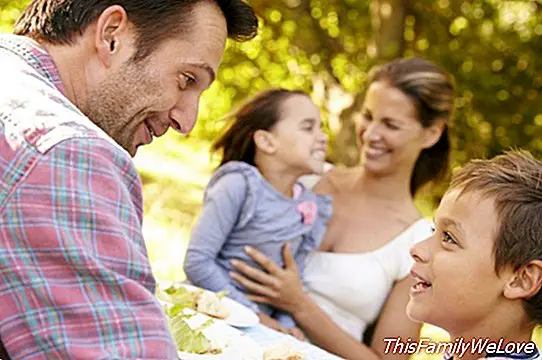Child violence: an NGO teaches how to protect our children

Given the escalation of child violence, the NGO Educo has developed a survey to measure whether parents are prepared to protect our children, to assess if we know what risks they face and if we know what to do or where to go in case of physical and abuse, neglect, negligent treatment, sexual abuse ...
Because these situations can occur in the home, school, street, social networks, and even in the institutional sphere, an information Kit for parents has been created.
Still many families are not aware of the risks their children may suffer, nor do they have the knowledge to cope with dangerous situations. The report Violence against children: do we know how to protect our children? carried out by the NGO Educo reveals that in the communication section in the family difficulties are detected.
Thus, the data reveal that 32% of surveyed parents find it difficult to maintain a daily communication with their children. Regarding the issue of bullying, 54% of the parents surveyed stated that they had not talked in detail with their children about this issue and 65% of the parents did not find the right moment to talk about sex education with their children; they prefer to wait for them to ask, to learn it at school or by themselves. For many it remains a taboo subject at home.
Harassment or cyberbullying among children
This form of violence between children not only occurs in school, but can occur in all spaces shared by children: family, sports or recreational activities, parks, or through social networks. However, most parents transfer responsibility to the school. So, according to the data, the 63% of parents they consider that it is the school that must solve the cases of cyberbullying.
In the event that your son or daughter suffers bullying or cyberbullying, 17% of respondents say that "it's a children's thing" and that, as long as it does not go on, "they would not do anything". 9% would tell their child to "not be intimidated and give it back" to the aggressor or aggressor. And in case your daughter or son aches, 11% of the parents would have a hard time admitting it or they would take iron out of the matter. 56% consider that the best option is to talk with their children, a percentage that goes up to 63% in the case of a daughter aged 6-9 years and that goes down to 49% in case of a male child of The same age.
Sexual abuse in childhood
Sex education continues to be a taboo subject in almost every household and also, specifically, 28% of families they do not perceive that their sons and daughters are at risk of suffer sexual abuse. 55% consider the street as the scenario of greatest risk and 37% identify the school or extracurricular activities. Only 6% cite the family environment.
Safe Internet for children
Most parents surveyed show a relaxed attitude towards the Internet and therefore do not take measures to protect their children from the dangers of the Internet. Specifically, 79% do not know any tools to control their children's access to the Internet.
54% of parents consider the Internet as a tool without many risks. So more than half of the parents have posted photos of their children in social networks or their WhatsApp profile and 43% have not talked extensively with their children about the problems and risks of the Internet. Fathers and mothers talk more with daughters 10 to 12 years old (69%) than with children of the same age (63%).
Informative campaign for parents
Faced with the evidence of this worrying reality, the Educo Protection Kit aims to promote the protection of children and, in a special way, to provide families with tools to help them prevent and deal with risk situations such as abuse, harassment, cyberbullying, etc., what to do to identify them, how to discuss these issues with the family, how to resolve conflicts or where to go in case of detecting any situation of violence against children.
The information is adapted to families with children of two age groups: 6-9 years and 10-12 years. Each kit includes a set of diverse materials such as manuals, stories, reading guides and index cards. The campaign also includes a television ad to sensitize parents about the risks and shows a situation inspired by real cases about the dangers of the Internet.
Marisol Nuevo Espín
It may interest you:
- The consequences of child maltreatment
- WhatsApp: 8 tips for good use for children
- How to talk about sex education at home
- Cyberbullying: 9 different modalities
- How to protect children from the dangers of the Internet




